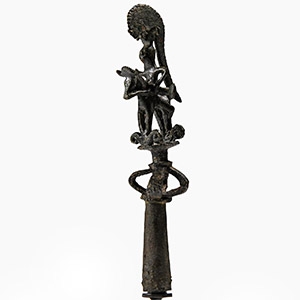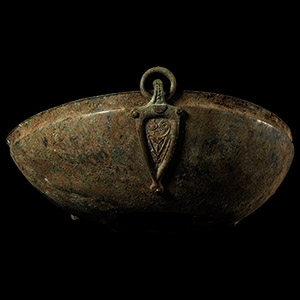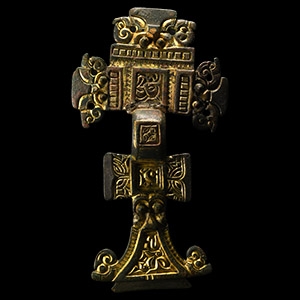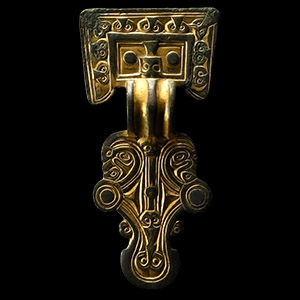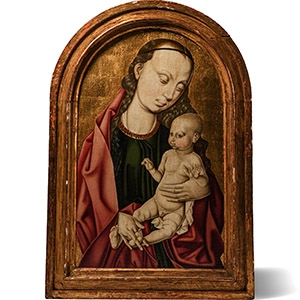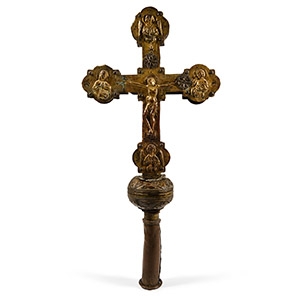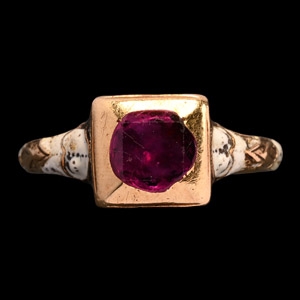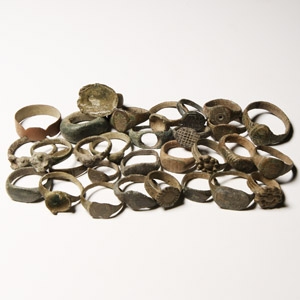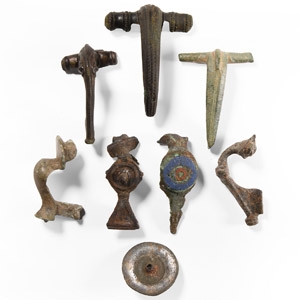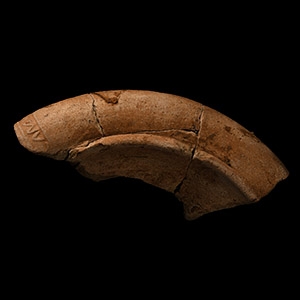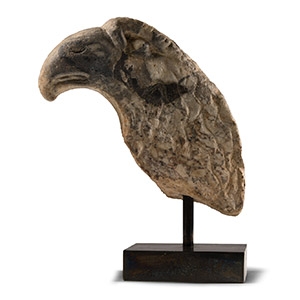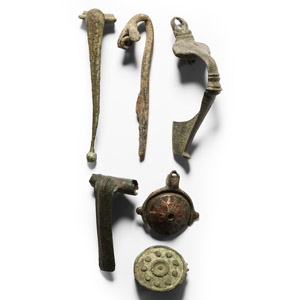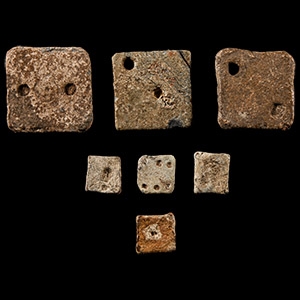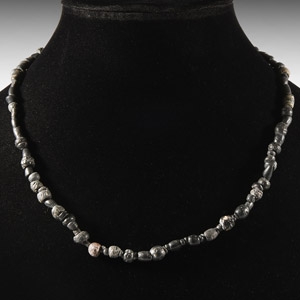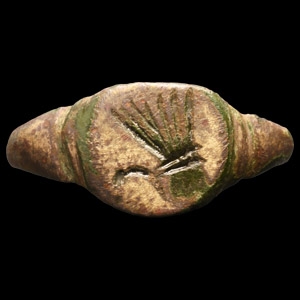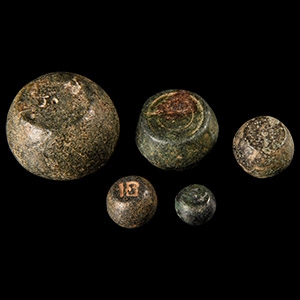Home > Auctions > 5 - 9 September 2023
Ancient Art, Antiquities, Natural History & Coins
Auction Highlights:
Acquired on the German art market around 2000s.
From the collection of an EU gentleman living in the UK.
Found Wiltshire and UK.
Ex private Merseyside, UK, collection.
Found Bedfordhire, 1980s.
Property of a Kempston, UK gentleman.
The abbreviation of CAMV for the ancient town of Camulodunum (modern Colchester, Essex) is well attested and commonly seen on the coins of the Celtic king Cunobelin.
Ex Simmons Gallery, London E11, UK.
Ex London collection, 1980s-1990s.
Cf. for a similar colossal marble eagle Bell, G.L., Amurath to Amurath, London, 1911, fig.3, p.10; Mendel, G., Catalogue des sculptures grecques, romaines et byzantines, Constantinople, 1914, nos.1135 (1949), vol.III, p.369; Reinach, S., Répertoire de la statuaire grecque et romaine, Tome III, 1920; Bertelli, G., ‘Amari usque ad mare, Acceptus e magister David a Siponto: nuove acquisizioni’, in Eurasiatica 4, 2016, Università degli Studi di Bari “Aldo Moro”, p. 67, fig. 6.
In the Greco-Roman world, the eagle was the symbol of Zeus. It is most probable that this eagle flanked a statue of the god. A story is bruited abroad to the effect that Zeus, wanting to determine the centre of the world, let eagles fly of equal speed from west and east. The birds, flying in opposite directions, met at Pytho and that marked the central point of the whole world.
From a UK collection before 2000.
Acquired from a London, UK, gallery.
Acquired in the 19th century.
Ex Jeger collection, Switzerland.
Found Essex, UK.
Ex Simmons Gallery, London E11, UK, in the 1990s.
From a North London collection.
UK gallery, early 2000s.
Private collection formed in the 1970s.
Ex property of an Essex, UK, businessman.
Ex private Merseyside, UK, collection.
Cf. Chadour, A.B., Rings. The Alice and Louis Koch Collection, volume I, Leeds, 1994, item 492, for type.
Formerly in a 1980s collection.
Acquired on the UK art market.
Previously the property of an Essex gentleman.
Cf. Wamser, L., Die Welt von Byzanz - Europas Östliches Erbe, München, 2004, item 258, for type.
Usually the reliquary crosses or enkolpia, were composed of two separate halves, inside of which a relic of a saint was contained; this could have been a piece of cloth or a bone. This extraordinary piece is very rare due to containing part of the Gospel of John about the Crucifixion.
Ex Simmons Gallery, London E11, UK, in the 1990s.
From a North London collection.
589 - 600 of 2453 LOTS

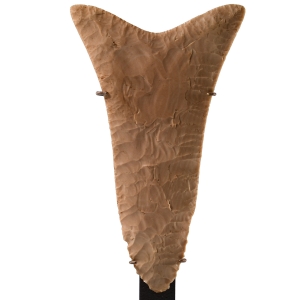
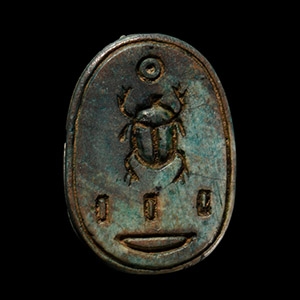
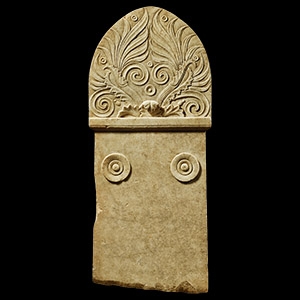
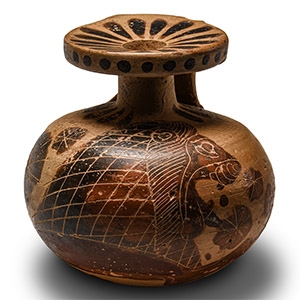
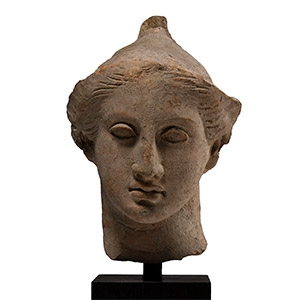
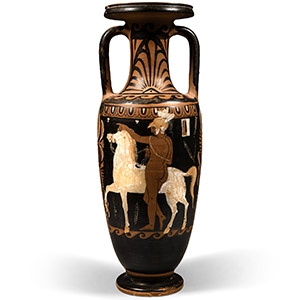
.jpg)
.jpg)
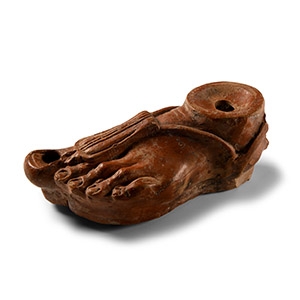
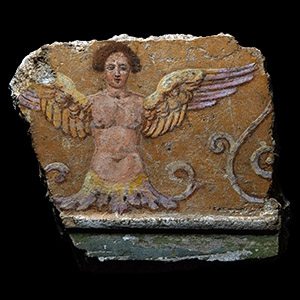
.jpg)
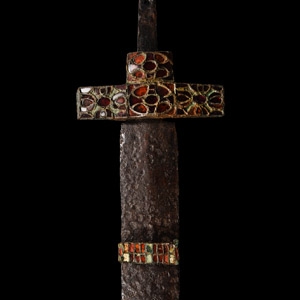
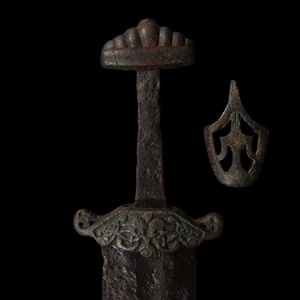
.jpg)
